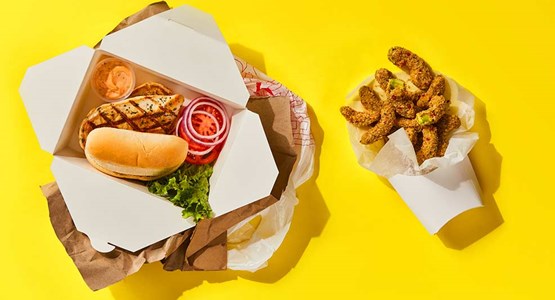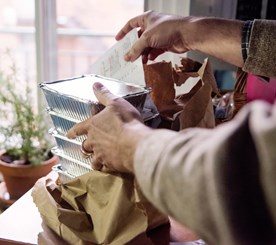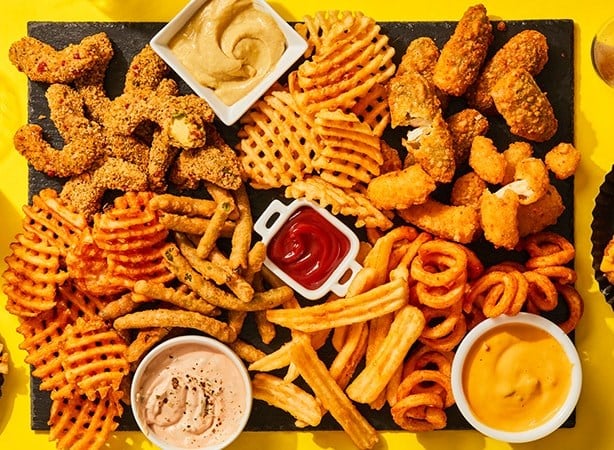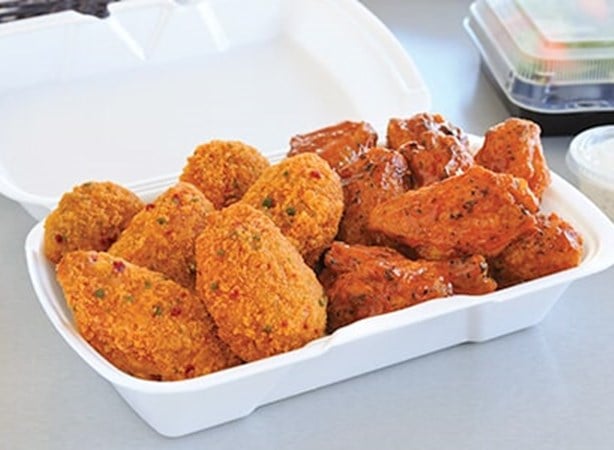
Article courtesy of Informa
Operators will continue to pursue off-premise business opportunities in 2021.
Off-premises dining had been gaining traction steadily before the pandemic accelerated the trend last March, and it is expected to continue to play a significant role in the restaurant industry going forward.
“This was the gradual trajectory the industry was on, pre-COVID,” says David Portalatin, vice president and food industry advisor at The NPD Group. “If you look at the five years before the coronavirus hit, off-premise occasions were growing and on-premise occasions were declining. Quick-service restaurants that typically have drive-thru windows and higher capacity for off-premise were gaining share in the marketplace.”

“If you look at the five years before the coronavirus hit, off-premise occasions were growing and on-premise occasions were declining.”
This has been happening predominantly because consumers are increasingly consuming meals at home, whether they prepare them themselves or source them from restaurants, Portalatin says. The pandemic, of course, only accelerated those trends.
Off-Premise Traffic on Growth Trajectory
Data from NPD Group’s CREST shows that restaurants lost about half of their on-premises dining traffic—down 49.7%—in the 12 months through November 2020, compared with the preceding 12 months. Meanwhile, off-premise traffic gained 12.6%.
As a share of total traffic, off-premise dining grew to more than three-fourths of restaurant visits, according to the NPD research.

“Restaurant operators have learned how to go to market differently, so I think you’re going to see a higher level of off-premise volume for the longer term coming out of this.”
As restaurants have expanded their abilities to meet consumer demand for off-premise dining, they will continue to seek to leverage those investments going forward, Portalatin says.
“Once you have a new capacity, you’re not likely to just lay that aside because the pandemic subsides,” he says. “Restaurant operators have learned how to go to market differently, so I think you’re going to see a higher level of off-premise volume for the longer term coming out of this.”
Embracing Digital Ordering
Although restaurant delivery saw strong gains in the past year, Portalatin says he expects that operators will try to steer consumers toward models that emphasize digital ordering with pickup by the customers themselves—whether at pickup windows or in the drive-thru lanes, as opposed to relying on third-party delivery services.
He cites the success of the “buy-online, pickup-in-store” model—known in the retail industry as BOPIS—in food retailing and other brick-and-mortar retail channels.

The most important factors in deciding which restaurant to order from are convenience (58%) and speed (49%), the report found, and they will likely continue to prefer mobile apps.
“The same thing is happening in restaurants,” says Portalatin. “That way the consumer is not paying a premium for delivery, and the restaurant operator is not sacrificing costs or their margin to subsidize that delivery.”
In connection with the ongoing shift toward off-premise consumption, several other changes in the ways restaurant operators conducted business in 2020 are expected to linger. These include enhanced mobile app-based ordering and loyalty systems, contactless pickup and delivery, menu and labor efficiencies, shrinking store sizes and the ongoing growth of delivery-only “ghost kitchen” concepts.
 A consumer survey conducted last year by Deloitte showed that 46% of consumers expected to continue elevated takeout and delivery ordering post-COVID, and they have come to expect their experiences to be frictionless. The most important factors in deciding which restaurant to order from are convenience (58%) and speed (49%), the report found, and they will likely continue to prefer mobile apps.
A consumer survey conducted last year by Deloitte showed that 46% of consumers expected to continue elevated takeout and delivery ordering post-COVID, and they have come to expect their experiences to be frictionless. The most important factors in deciding which restaurant to order from are convenience (58%) and speed (49%), the report found, and they will likely continue to prefer mobile apps.
“Any alternate ordering method should honor this twin mandate,” the report states. “A smart home device, text or even a virtual reality app may seem cool, but the minutes that pass while patrons await their food are the same minutes they counted when they used to order from the yellow pages.”
Contactless pickup has also become more sophisticated and technology-driven. The recent opening of Automat Kitchen in Jersey City, New Jersey, for example, is a reinvention of the automats of old that resembled wall-sized vending machines. Automat Kitchen’s iteration of the concept, however, has its own digital-ordering system that allows consumers to get food prepared to order, delivered through pickup windows that open with a code sent to customers via text. Consumers can scan a QR code on-site to place an order using their phone or use one of the kiosks provided.
Technology is Here to Stay
“The technology that’s being used for this is not going to go away after COVID,” says Mike Kostyo, senior managing editor and trendologist at Datassential.
Similar contactless automat-style order pickup technology, provided by former restaurant operator Eatsa, has also been deployed at fast-casual chains Wow Bao, Mac’d and others.

“The technology that’s being used for this is not going to go away after COVID,”
Streamlined menus go hand-in-hand with the increase in off-premise consumption, in part because certain items don’t travel well, but also because simpler menus bring efficiencies in labor costs, inventory management and speed of service. Several operators have scaled back their offerings to focus on top-sellers and to optimize kitchen operations with reduced staffs.
McDonald’s reports that both speed and order accuracy improved following the elimination of its All Day Breakfast menu. The company says it will seek to remain responsive to customer demands, however, and has not committed to retaining a streamlined menu in the long term.
A scaled-down menu has “served a purpose” for the chain, Chris Kempczinski, president and CEO of McDonald’s, said during a presentation last year. But then he added, “We have to be attentive to what the customers are looking for when they come to a McDonald’s, and I think it’s going to vary market by market.”

